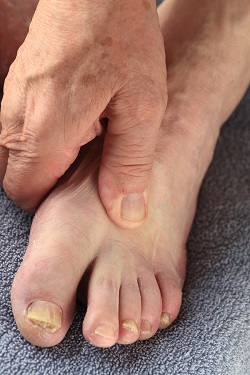
Discover the telltale signs of a foot infection and what you can do to prevent diabeticrelated foot problems.
If you’ve been diagnosed with diabetes, you likely know all too well there is a significant chance you may deal with a foot complication. While foot problems for healthy individuals often go away on their own, when you have diabetes maintaining good foot health is vitally important. Since diabetics are at an increased risk for lower limb amputation, it’s important to check your feet everyday for signs of infection. Here are some common foot problems you may face:
Athlete’s foot: This fungal infection is characterized by itching, cracked, and red skin on the foot. While there are some overthecounter treatments, if you have diabetes and are currently dealing with Athlete’s foot, we recommend talking to your podiatrist first. Your podiatrist may prescribe a stronger antifungal pill or cream to fight the infection.
Fungal nail infection: If you are suffering from brittle, discolored nails that are fragile and tend to crumble, then you may have a fungal infection. These nail infections are more difficult to treat, so talk to your podiatrist about whether oral medication or laser treatment is recommended.
Calluses/Corns: These are both the result of hard skin build up, with calluses developing on the bottoms of feet and corns developing on or between toes. These may develop from wearing shoes that rub against your skin. Sometimes using a corn pad can help cushion and protect the callus or corn from further damage while also promoting faster healing. However, talk to your podiatrist about certain medications that can help soften this condition.
Blisters: Just as friction from rubbing shoes can cause calluses and corns, they can also cause painful blisters. These blisters can become infected, and it’s important to leave blisters alone and not to pop them. Use an antibacterial gel or cream to help prevent infection and to protect the damaged skin.
- Posted on February 04, 2016
- Tags Diabetic Foot Care Foot Infections
- Categories Foot Care